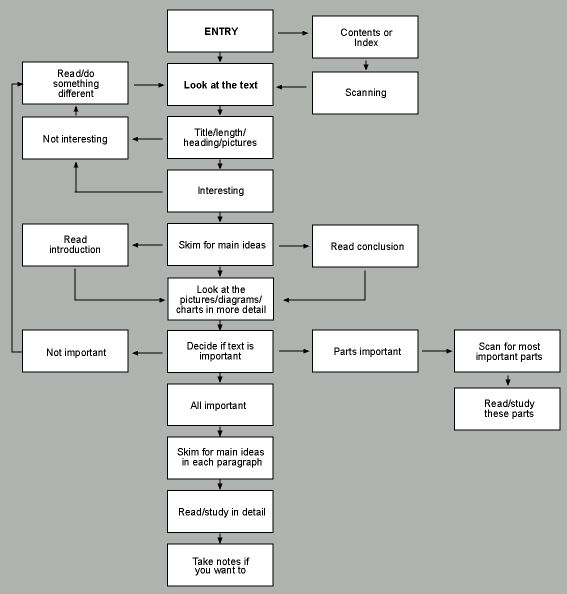Bottom-up and top-down processing
The key task facing any teacher when starting work on a text is to decide how to help students access and interpret the text, and subsequently respond to its content. Some L2 teachers are inclined to read every text with their students intensively, ie to decipher the text word by word, phrase by phrase and sentence by sentence. However, as shown in Module 7, this is likely to be a very inefficient way for students to read: L2 learners need to be flexible readers and to develop the use of both so-called 'bottom-up' and 'top-down' reading strategies. (See also the discussion of schema theory in Module 7, sections, 7.1.3 - 7.1.4.).
It is almost intuitive to think readers need to understand all the individual words and phrases of a text before they can understand the whole (ie adopt a bottom-up approach). However, work on the detail in difficult parts of a text can be greatly facilitated if the reader has a firm grasp of the overall theme. Effectively, the learner guesses or predicts that a particular section or sentence must have a particular meaning because of the overall context and then uses this top-down hypothesis to work out the detail of the syntax. Such an approach allows the reader to exclude other interpretations on the grounds that they do not fit in with the rest of the text or run counter to common sense; a bottom-up approach, focusing on the actual words, can then be used to develop a more appropriate meaning.
Thus both approaches, top-down and bottom-up, are essential skills for L2 readers. In what follows we explore both approaches but recommend that work on L2 texts should start with top-down interpretation techniques and subsequently alternate between the two as they are interdependent. Figure 8.2 provides a scheme to illustrate this interdependent relationship in work on long texts:

Figure 8.2
A method for reading long texts
(From Revell and Sweeney, 1993: 13)